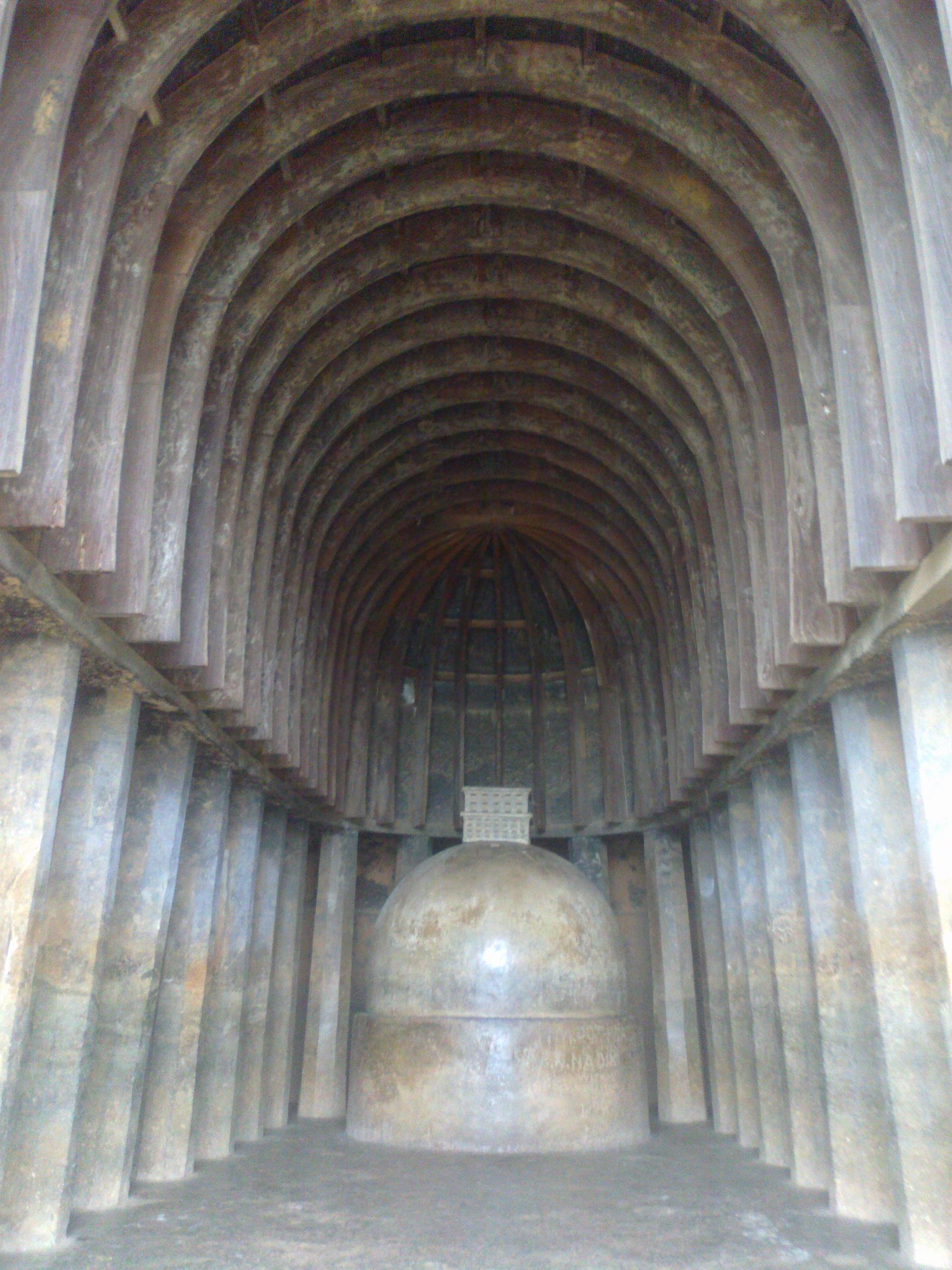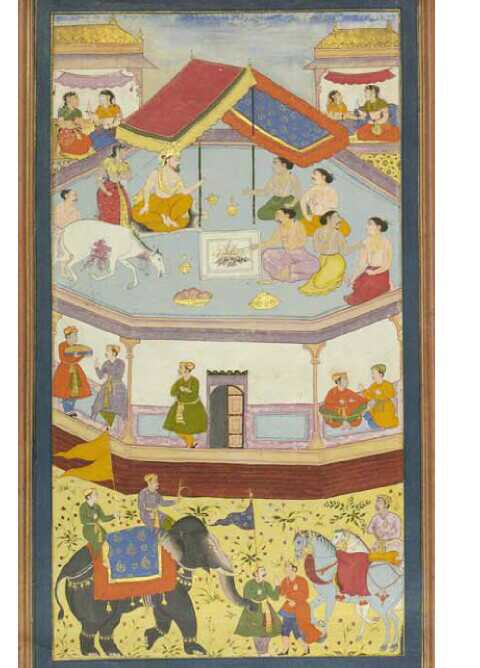|
Dharasena (ruler)
Dharasena was a Traikutaka ruler of the Konkan coast. He was the son of the Traikutaka ruler Indradatta and succeeded him as king. He is known to have performed an ''ashwamedha'' horse sacrifice and was succeeded by his son Vyaghrasena. Reign King Dharasena expanded his realm, which soon bordered the Vakataka realm. This led to conflict and the Vakataka king Narendrasena, who with the help of his son & crown prince Prithivishena, probably defeated the Traikutikas, as later king Prithivishena's inscriptions refer to him twice rescuing the "sunken fortunes of his family". See also *Abhira dynasty *Konkan *Kumaragupta I Kumaragupta I was Gupta Empire, Gupta emperor from 415 until his death in 455. A son of the Gupta king Chandragupta II and Queen Dhruvadevi, he seems to have maintained control of his inherited territory, which extended from Gujarat in the wes ... References {{DEFAULTSORT:Dharasena 5th-century Indian monarchs 5th-century Hindus ... [...More Info...] [...Related Items...] OR: [Wikipedia] [Google] [Baidu] |
Traikutaka Dynasty
The Traikutakas were a dynasty of Indian kings who ruled between 388 and 456. The name "Traikutakas" seems to be derived from the words for a three-peaked mountain ("Tri-kuta"). The Traikutakas are mentioned in Kalidasa's Raghuvamsa, in which they are located in the area of northern Konkan, Kokan. The dominions of the Traikutakas further included Aparanta and northern Maharashtra. The coins of the Traikutaras are found extensively in southern Gujarat, and southern Maharashtra beyond the Ghats. Their design is very close to that of the Western Satraps, from which they probably inherited some territories, and traces of the obverse legend with Greek alphabet, Greek letters can still be seen. History Some scholars theorize that the Traikutakas were a branch of the Abhira dynasty, Abhiras, and refer to them as the "Abhira-Traikutakas". These scholars assume that the Traikutaka records were dated in the so-called Kalachuris of Mahishmati, Chedi-Kalachuri era, starting in 249 CE. Howev ... [...More Info...] [...Related Items...] OR: [Wikipedia] [Google] [Baidu] |
Chaitya
A chaitya, chaitya hall, chaitya-griha, (Sanskrit:''Caitya''; Pāli: ''Cetiya'') refers to a shrine, sanctuary, temple or prayer hall in Indian religions. The term is most common in Buddhism, where it refers to a space with a stupa and a rounded apse at the end opposite the entrance, and a high roof with a rounded profile. Strictly speaking, the chaitya is the stupa itself, and the Indian buildings are chaitya halls, but this distinction is often not observed. Outside India, the term is used by Buddhists for local styles of small stupa-like monuments in Nepal, Cambodia, Indonesia and elsewhere. In Thailand a stupa itself, not a stupa hall, is called a chedi, a local Thai word derived from the Pali Cetiya. In the historical texts of Jainism and Hinduism, including those relating to architecture, ''chaitya'' refers to a temple, sanctuary or any sacred monument. Most early examples of chaitya that survive are Indian rock-cut architecture. Scholars agree that the standard form follo ... [...More Info...] [...Related Items...] OR: [Wikipedia] [Google] [Baidu] |
Brāhmī Script
Brahmi ( ; ; ISO 15919, ISO: ''Brāhmī'') is a writing system from ancient India. "Until the late nineteenth century, the script of the Aśokan (non-Kharosthi) inscriptions and its immediate derivatives was referred to by various names such as 'lath' or 'Lat', 'Southern Aśokan', 'Indian Pali', 'Mauryan', and so on. The application to it of the name Brahmi [''sc. lipi''], which stands at the head of the Buddhist and Jaina script lists, was first suggested by T[errien] de Lacouperie, who noted that in the Chinese Buddhist encyclopedia ''Fa yiian chu lin'' the scripts whose names corresponded to the Brahmi and Kharosthi of the ''Lalitavistara'' are described as written from left to right and from right to left, respectively. He therefore suggested that the name Brahmi should refer to the left-to-right 'Indo-Pali' script of the Aśokan pillar inscriptions, and Kharosthi to the right-to-left 'Bactro-Pali' script of the rock inscriptions from the northwest." that appeared as a fully ... [...More Info...] [...Related Items...] OR: [Wikipedia] [Google] [Baidu] |
Vishnu
Vishnu (; , , ), also known as Narayana and Hari, is one of the Hindu deities, principal deities of Hinduism. He is the supreme being within Vaishnavism, one of the major traditions within contemporary Hinduism, and the god of preservation (sattva). Vishnu is known as ''The Preserver'' within the Trimurti, the triple deity of Para Brahman, supreme divinity that includes Brahma and Shiva.Gavin Flood, An Introduction to Hinduism' () (1996), p. 17. In Vaishnavism, Vishnu is the supreme Lord who creates, protects, and transforms the Hindu cosmology, universe. Tridevi is stated to be the energy and creative power (Shakti) of each, with Lakshmi being the equal complementary partner of Vishnu. He is one of the five equivalent deities in Panchayatana puja of the Smarta tradition of Hinduism. According to Vaishnavism, the supreme being is with qualities (Saguna Brahman, Saguna), and has definite form, but is limitless, transcendent and unchanging absolute Brahman, and the primal Atma ... [...More Info...] [...Related Items...] OR: [Wikipedia] [Google] [Baidu] |
Vaishnavism
Vaishnavism () ), also called Vishnuism, is one of the major Hindu denominations, Hindu traditions, that considers Vishnu as the sole Para Brahman, supreme being leading all other Hindu deities, that is, ''Mahavishnu''. It is one of the major Hindu denominations along with Shaivism, Shaktism, and Smartism. Its followers are called Vaishnavites or ''Vaishnava''s (), and it includes sub-sects like Krishnaism and Ramanandi Sampradaya, Ramaism, which consider Krishna and Rama as the supreme beings respectively. According to a 2020 estimate by The World Religion Database (WRD), hosted at Boston University’s Institute on Culture, Religion and World Affairs (CURA), Vaishnavism is the largest Hindu sect, constituting about 399 million Hindus. The ancient emergence of Vaishnavism is unclear, and broadly hypothesized as a History of Hinduism, fusion of various regional non-Vedic religions with worship of Vishnu. It is considered a merger of several popular non-Vedic theistic traditio ... [...More Info...] [...Related Items...] OR: [Wikipedia] [Google] [Baidu] |
Konkan
The Konkan is a stretch of land by the western coast of India, bound by the river Daman Ganga at Damaon in the north, to Anjediva Island next to Karwar town in the south; with the Arabian Sea to the west and the Deccan plateau to the east. The hinterland east of the coast has numerous river valleys, riverine islands and the hilly slopes known as the Western Ghats; that lead up into the tablelands of the Deccan. The Konkan region has been recognised by name, since at least the time of Strabo, in the third century CE. It had a thriving mercantile port with Arab tradesmen from the 10th century onwards. The best-known islands of Konkan are Ilhas de Goa, the site of the Goa state's capital at Panjim; also, the Seven Islands of Bombay, on which lies Mumbai, the capital of Maharashtra & the headquarters of Konkan Division. Definition Historically, the limits of Konkan have been flexible, and it has been known by additional names like " Aparanta" and "Gomanchal", the lat ... [...More Info...] [...Related Items...] OR: [Wikipedia] [Google] [Baidu] |
Ashwamedha
The Ashvamedha () was a horse sacrifice ritual followed by the Śrauta tradition of Vedic religion. It was used by ancient Indian kings to prove their imperial sovereignty: a horse accompanied by the king's warriors would be released to wander for a year. In the territory traversed by the horse, any rival could dispute the king's authority by challenging the warriors accompanying it. After one year, if no enemy had managed to kill or capture the horse, the animal would be guided back to the king's capital. It would be then sacrificed, and the king would be declared as an undisputed sovereign. The ritual is recorded as being held by many ancient rulers, but apparently only by two in the last thousand years. The most recent ritual was in 1741, the second one held by Maharajah Jai Singh II of Jaipur. The original Vedic religion had evidently included many animal sacrifices, as had the various folk religions of India. Brahminical Hinduism had evolved opposing animal sacrifices, ... [...More Info...] [...Related Items...] OR: [Wikipedia] [Google] [Baidu] |
Vakataka Dynasty
The Vakataka dynasty () was an ancient Indian dynasty that originated from the Deccan in the mid-3rd century CE. Their state is believed to have extended from the southern edges of Malwa and Gujarat in the north to the Tungabhadra River in the south as well as from the Arabian Sea in the west to the edges of Chhattisgarh in the east. They were the most important successors of the Satavahanas in the Deccan and contemporaneous with the Guptas in northern India. Little is known about Vindhyashakti (), the founder of the family. Territorial expansion began in the reign of his son Pravarasena I. It is generally believed that the Vakataka dynasty was divided into four branches after Pravarasena I. Two branches are known, and two are unknown. The known branches are the Pravarapura-Nandivardhana branch and the Vatsagulma branch. Gupta Emperor Chandragupta II married his daughter into the Vakataka royal family and, with their support, annexed Gujarat from the Saka Satraps in 4t ... [...More Info...] [...Related Items...] OR: [Wikipedia] [Google] [Baidu] |
Narendrasena
Narendrasena () was a ruler of the Nandivardhana-Pravarapura branch of the Vakataka dynasty. He succeeded his father Pravarasena II as Maharaja. Early life Narendrasena was possibly born to Ajnakabhattarika, who may have been the chief queen of Pravarasena II and is mentioned as the mother of "Narindaraja" (possibly referring to Narendrasena) in a charter from Pravarasena's 16th regnal year. Sometime during his father's reign, Narendrasena was married to a princess named Ajjhitabhattarika who was described as the daughter of the "king of Kuntala". It is not known for certain who this "king of Kuntala" was, but he is often identified with the Kadamba king Kakusthavarman who is known to have married his daughters into several prominent royal families. Reign The death of Pravarasena II may have been followed by a succession struggle, from which Narendrasena emerged victorious. The Vakataka records state that Narendrasena had to "regain the fortunes of his family" after suffer ... [...More Info...] [...Related Items...] OR: [Wikipedia] [Google] [Baidu] |
Prithivishena II
Prithivishena II (IAST: ''Pṛthivīṣeṇa''; ) was a ruler of the Nandivardhana-Pravarapura branch of the Vakataka dynasty. He succeeded his father Narendrasena as Maharaja. Prithivishena II is the last known king of the main Vakataka line, which is no longer attested after his reign. Early life Prithivishena was born to Narendrasena and his wife Ajjhitabhattarika, a princess of Kuntala. He was probably born while his father was still a Crown Prince during the reign of Pravarasena II, Prithivishena's grandfather. A.S. Altekar suggests that when Prithivishena was a youth of about 20 years, he aided his father in repulsing the Nalas of the Bastar region who had invaded the Vakataka kingdom. Reign Prithivishena's inscriptions refer to him twice rescuing the "sunken fortunes of his family". It is unclear what these two instances were. Altekar suggests that the first instance was the aforementioned repulsion of the Nalas during the reign of Prithivishena's father, and the se ... [...More Info...] [...Related Items...] OR: [Wikipedia] [Google] [Baidu] |
Coinage Of Dharasena, Traikutaka Dynasty
Coinage may refer to: * Coins, standardized as currency * Coining (mint), the process of manufacturing coins * ''COINage'', a numismatics magazine * Tin coinage, a tax on refined tin * Coinage, a protologism or neologism See also * Coin (other) A coin is a small, flat, round piece of metal or plastic that is used as currency. Coin or Coins may also refer to: Places France * Coin-lès-Cuvry, a municipality in Moselle * Coin-sur-Seille, a municipality in Moselle * Mont Coin, a mountai ... * Coining (other) {{disambig ... [...More Info...] [...Related Items...] OR: [Wikipedia] [Google] [Baidu] |





